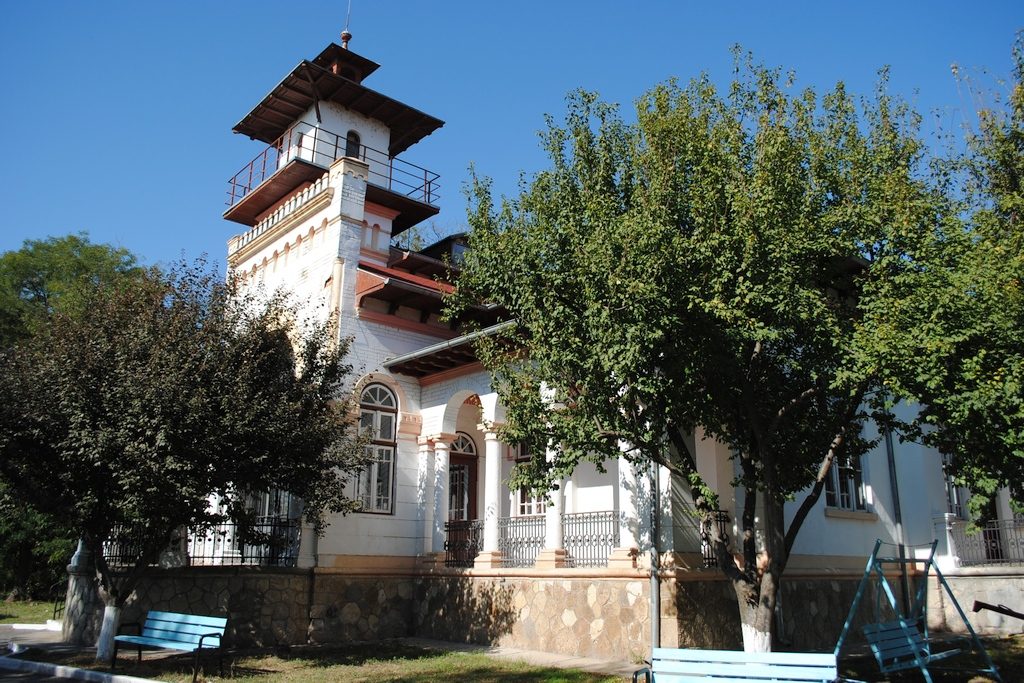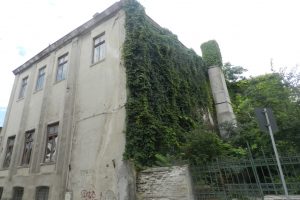

The Murfatlar domain came into the possession of the Kogălniceanu family in the year 1885, when the great political man and writer, Mihail Kogălniceanu, has acquired the real property from Hagi Me(h)met Aralam bey, member of a prosper agrarian family from the Constanța county.
The son of the political man, Vasile M. Kogălniceanu, is the one who settled in the Murfatlar manor, from where he could carry out his activity as field inspector in Dobrogea, but also the one of network administrator of Mangalia. Vasile M. Kogălniceanu remained known in history for his support given to the Agrarian Reform of 1923 and to the cause of the land ownership for the poor peasants.
The manor is built in an eclectic style, presenting details specific to the occidental style of the XIXth century, but also elements of visible Moresque influence in the case of the grooved fronton or of the pinnacle tower.
Although recently is passed through a process of rearrangement and re-functioning, therefore, being prepared to accommodate kindergarten no. 2 from Murfatlar, the building still keeping even today the fittings and original woodwork pieces. The construction is among the few Romanian manors of modern era kept until present and classified as historical monument, from Dobrogea.
The manor is surrounded by a park where it is also situated the impost of the trinity built in 1943 in the memory of the ones who were lost on the frontline.
Son of the great politician, historian and writer Mihail Kogălniceanu, he attends the first studies with private teachers, then the ones for the secondary education at Berlin. He attends the courses of the Agricultural Sciences Faculty from Grignon (France).
After he returns in the country, he becomes a “network administrator”, then a field inspector in Dobrogea. It is notices the fact that, even from the early years of youth he turns his attention mainly to the rural world, having a sharp analytical spirit of researching the problems regarding the life of the peasants. This aspect is revealed by his articles from the newspapers or magazines such as “The Époque”, “The Peasants’ Gazette”, or “The circle”, where he approaches, starting with the year 1891, more aspects connected to the multitude of problems existing in the rural world.
Besides the problem of the peasants, he was a strong supporter for the voting system based on the universal vote, in this sense funding, together with Vintilă C. A. Rosetti and Ion Nădejde, The league of the universal vote (1895), and in 1896 The league for the Sunday rest. His publicist activity continues in the publications “The Romanian” led by Vintilă C. A. Rosetti, where he is first editor, and at the “Danube Star”, which he funds and where he signs more articles of democratic orientation.
Starting with the year 1901 he will lead for five years the newspaper “The Agrarian”.
His political activity is developed in the National Liberal Party, starting with the year 1893. His literary – historical work is composed of various works about politics: Relative documents at the 2nd of May 1864 (1894), The reign of Bibescu – Vodă (1894) and, especially, about the biggest agrarian problem existing in the Romanian society The Laza Farm (1900), Advice about the vegetable gardens (1902). The peasant question (1906), namely, Vasile Kogălniceanu argued for the material and spiritual growth of the rural world, for its political and cultural emancipation.


